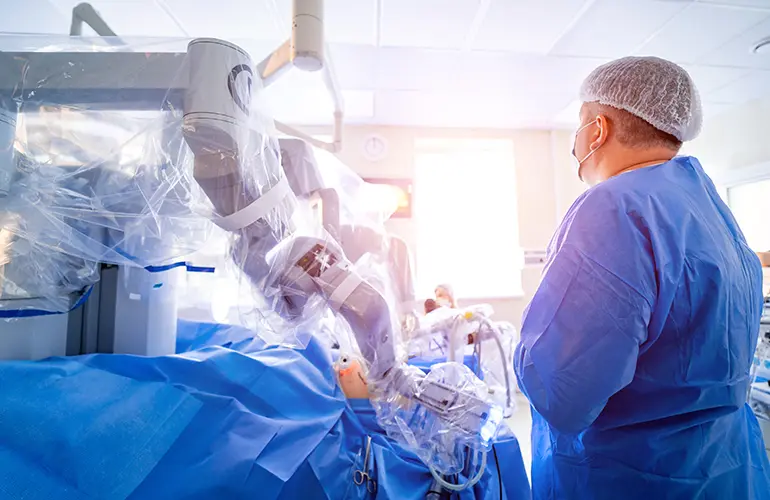Surgical robotics trends and how to accelerate adoption


Moon Surgical Chief Strategy Officer Jeffery Alvarez. [Photo courtesy of Moon Surgical]
Moon Surgical Chief Strategy Officer Jeffery Alvarez, Stryker Digital, Robotics, and Enabling Technologies President Robert Cohen, Osso VR CEO Justin Barad and FundamentalVR CEO and co-founder Richard Vincent see rapid changes ahead for surgical robotics and opportunities to win over surgeons, health systems and patients.
We’ve curated excerpts from the conversation, lightly edited for clarity and space.
Trends in surgical robotics
Alvarez: “There’s a transition from building robots that are hyper-specialized in one thing and do one thing really well, to platforms that are looking at how to solve bigger parts of the problem: How do we solve systematic issues in the operating room and develop platforms that work across a variety of procedures? That’s a big trend that we’re seeing now. When you look at architectures like CMR’s Versius or Medtronic’s Hugo, they’re moving toward trying to have some more of that adaptability to support more operations.”

Robert Cohen is president of Stryker’s Digital, Robotics and Enabling Technologies organization. [Photo courtesy of Stryker]
Stryker on steroids: How enabling technology will supercharge surgical robotics

Osso VR CEO Justin Barad [Photo courtesy of Osso VR]
Cohen: “The patients have changed over the decades. In 2010, if you were going for a total hip or total knee procedure, it was probably your children who were doing the investigation for you on the internet. Now that we’ve evolved and you have people getting at implants at an earlier age, people want to be more active and they go search online. Go look [online for] a Mako total knee and one of the first things you’re going see is better patient satisfaction. … We’ve been strong, loud and proud about accuracy and precision. … Once surgeons say, ‘I do a better job when I have a Mako robot and I am executing the plan I want,’ we’ve seen patient adoption, and they remember that those patients will actually repeat that. They feel better. They feel that they got a higher precision surgery because of a robot.”
More from DeviceTalks Boston: The ZimVie Tether helps kids with scoliosis — if they can get it in time
Accelerating the adoption of surgical robotics
Cohen: “If you address clinical issues, the market segment will grow. If you address two clinical issues, you will have a following. Mako started back in 2006 with a partial knee. It really did remarkable for a partial knee, but the indications are very narrow for a partial knee, and you didn’t get a lot of volume for that procedure, so you didn’t get a lot of podium time. It didn’t have enough interest. Hips evolved, but the hips were a little bit challenging to explain what the clinical issues were. In other words, a hip patient who may be walking with a limp is not necessarily in pain as much. The tipping point was in 2017 when Stryker released commercially the total knee application…
Read more at our sister site, Medical Design & Outsourcing.



